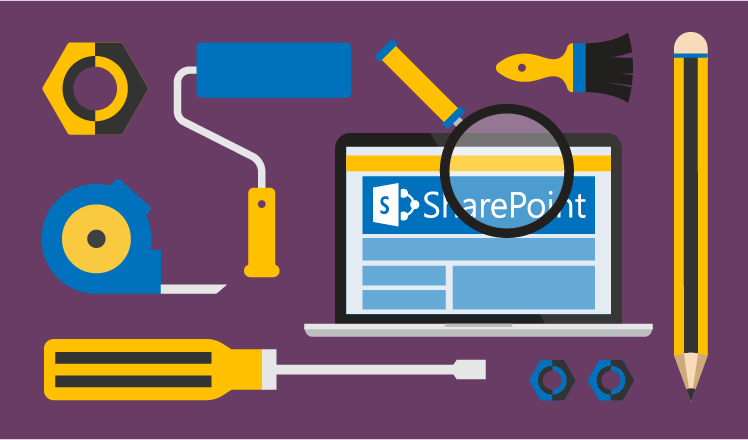SharePoint support reshaped: From troubleshooting to strategic business tactics

Once their SharePoint solutions are deployed and tuned, companies often get relaxed, waiting for positive dynamics in employee collaboration and significant improvement in organizational processes. But what if instead of expressing admiration, users complain that the solution doesn't meet their needs? Or what to do if several years after implementation, the use and popularity decrease dramatically while the solution fails to contribute to the corporate activities at all?
Both scenarios are pretty frequent. The AIIM report Connecting and Optimizing SharePoint states that 63% of SharePoint deployments are stalled or struggling to meet business users' expectations. In this case, the worst decision is to leave things as they are and let users cope with inconveniences on their own. Eventually, such inertia can lead to other negative outcomes.
Why stalled SharePoint solutions are risky
Companies that run SharePoint solutions, inappropriate to their business needs, or use outdated solutions that don't keep up with the organizational development pace, risk to:
- Lose investments into the initial SharePoint implementation. Poorly used SharePoint Online solutions would also mean wasting money on monthly user subscriptions.
- Halt employees' activities and miss business goals. Ineffective solutions don't support users in their daily tasks and don't allow companies to reach important targets that the solution was to hit, be it more dynamic collaboration, a better relationship with customers or automated workflows.
- Create an insecure working environment. If users switch to third-party solutions (for example, personal file storages, cloud services, etc.), companies just can't guarantee the relevant protection of corporate content, so sensitive data leaks can occur.
At the same time, organizations facing their SharePoint solutions' decline admit that they just don't have enough expertise or IT resources to move on with SharePoint (the AIIM report). This makes it clear such falling behind has to do not with initial development gaps but post-deployment issues rooted in how companies handle their SharePoint support and maintenance.
Rethinking traditional approach to SharePoint support and maintenance
Traditionally, companies outsource SharePoint support or maintenance services to fix technical issues. Although the reason makes sense, not all companies understand that even 'healthy? SharePoint solutions need support or maintenance. In this case, SharePoint support goes far beyond ordinary bug fixing or troubleshooting and include targeted activities aimed at gradually improving the solution and marrying it with ever growing business needs.
Such a strategic approach to SharePoint support allows companies to:
- Respond to users' and business needs timely. Your maintenance and support service pack can also include a regular audit of your SharePoint environment to check how well it is aligned with users' needs. If the solution lags behind, relevant changes are to be initiated. At the next level, a SharePoint support team can also investigate if the current solution fits a given business environment. This can be a great opportunity to consider and develop custom features to cover industry- or business-specific processes.
- Deal with user adoption. SharePoint support and maintenance also imply a permanent communication with end users. Gathering users' feedback, a support team can reveal if there are critical issues with user experience and adoption, and prevent SharePoint from being rejected.
- Gear the solution to its full capacity. Timely SharePoint updates allow companies to ensure its sleek performance and security, simplify future development and prevent emergencies that can block users' activities for several days.
- Optimize the SharePoint deployment. Comprehensive maintenance and support can include such important activities as SharePoint migration, solution redesign, and custom development to make the existing solutions more effective, user-friendly and less labor- and time-consuming in software management terms. A real case from our SharePoint consulting practice proves that a well-thought SharePoint support can help SharePoint owners improve their solutions substantially by upgrading them, rethinking site structure and UI, and delivering new features.
Continuous support for business goals
?People can only do their best work when they have the best tools', stated Satya Nadella, CEO of Microsoft, in his speech at The Future of SharePoint event. Although it's unlikely that the very first SharePoint implementation will turn out to be truly best, it can grow into the best tool if a company stimulates its evolution. Working on their SharePoint solutions and supporting them continuously, they can reach several important goals that define the overall organizational success.
Increased employees' productivity and engagement. Through a continuous improvement of a SharePoint solution, companies can help their staff to stay engaged in their activities and fulfill their duties successfully, relying on effective team collaboration, project management or knowledge management.
Won business opportunities. SharePoint support and maintenance are also to let companies' owners think business instead of struggling with users' dissatisfaction with their working tools or taking permanent control over employees' actions.
Better control over the SharePoint budget. Finally, a well-planned support and maintenance allow companies to wisely plan their SharePoint-related investments, thus avoiding sharp and spontaneous spending. Smooth improvement and scheduled updating are always better than rehabilitating a neglected solution with a bunch of technical issues that will require substantial investments to fix them all and then to restore the solution's reputation among users.
Put it into your next SLA
To make such a revamped SharePoint support plan work, companies will also have to work on their SharePoint service level agreement deeply. Organizations can negotiate possible service models with their SharePoint services providers in order to switch from a usual troubleshooting approach to a strategic support standard. That's why it is reasonable to choose service partners that are proficient in both SharePoint consulting and development so that they deal with technical issues and attend to solutions' evolution and user adoption equally well.


